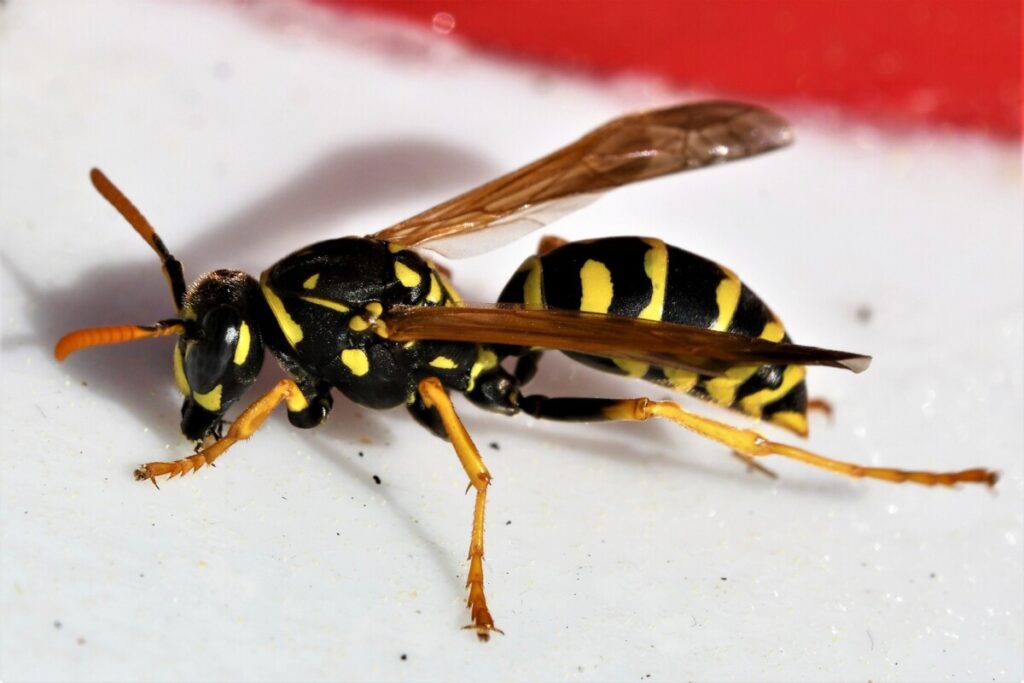Insect stings can be very dangerous. With over 4,000 bee species and 18,000 wasp species native to the United States, it is no surprise that some of them might turn up inside your home or out in your yard. These insects are excellent pollinators, and they can play a significant role in helping your garden prosper. Even so, some are considered more aggressive than others and can pose a risk to your family’s well-being or your home’s structural integrity.
When you spot a beehive or wasp nest anywhere near or inside your house, it is typical to be alarmed. But, how do you identify which types are safe to have around? Here is where a basic knowledge of stinging insects proves to be essential. To help you understand and recognize different bees and wasps, we have listed below the most common types you will most likely find in your abode.
Bumblebees
Bumblebees are the easiest insects to identify, and they are the most well-known. The adorable creatures we saw in cartoon depictions of bees as children represent them. They are fuzzy tiny insects that are predominantly black but have yellow, orange, or white stripes. Although bumblebees constitute only one type of bee, they are still the most common, with around 50 species present in the United States. They pollinate nearly 30% of popular crops in the country. Bumblebees are non-aggressive and will not sting unless someone provokes or bothers them in their nests, commonly found on the ground.
Honey Bees
Honey bees have seemingly black and yellow stripes similar to bumblebees. However, they are less rounded, furry, and noticeably smaller than their close cousins. European settlers introduced them to the United States, making them non-native. Despite this, they have thrived and pollinate another 30% of essential edible plants in the country. Honey bees are more likely to sting humans, but they avoid doing so since they die after losing their stinger. You can commonly find honey bees in tree branches. They are also more likely to build a waxy hive indoors, taking advantage of wall cavities and hollow areas in your house’s structure.
Carpenter Bees
Contrary to what their name implies, carpenter bees do not eat wood, although they do drill into them. They do not live in colonies or hives, but it is easy to spot them. Carpenter bees create columns or “galleries” to live in and lay their eggs, leaving a perfectly round hole in wooden wallboards or furniture in your home.
There are seven species of these insects in the United States. Only the females have stingers, but – like bumblebees – they do not sting unless handled or disturbed. When you see a carpenter bee hovering around your home, these are mainly males protecting the females and their eggs nearby. They also have a yellow, hairy upper abdomen, but their lower torsos are primarily shiny and pure black.

Yellow Jackets
Finally, don’t underestimate yellow jackets. They live in colonies of thousands and swarm when attacking, making them the most concerning insects. They protect their nests, which are usually in small holes on the ground or in stone walls. Approaching a colony up to a few feet away provokes these aggressive creatures. In late summer or early autumn, they are more likely to hover around food sources, making them an even greater threat. If you see insects with bright yellow stripes, thin waists, and shiny bodies, it’s best to call a professional removal service immediately.
Paper Wasps
Wasps are notorious for being more aggressive and having more painful stings than bees. That is especially true for paper wasps. These stinging insects got their name from paper-like nests usually found hanging from tree branches, door frames, or ceilings. They have thin and smooth bodies that are predominantly brown with yellow stripes. But they can also have orange, red, or black spots. Paper wasps are highly attracted to strong scents. And they will immediately sting once you get too close to them or their nests.
Insect Stings – Conclusion
Despite the abundance of bees and wasps in the United States, these stinging creatures are undergoing a drastic population reduction. In many areas, 90% of colonies are being wiped out. As much as they can threaten our health, home, and safety, it is critical to ensure ethical ways to remove bees and wasps from our surroundings. It will help keep the balance in our ecosystem and ensure the survival of several plant and crop species.
All Bees Removal safely removes and relocates bees and wasps. They have licensed beekeepers with professional and technical knowledge on how to transfer stinging insects from your home to proper habitats where they could thrive without harming humans or other domesticated animals. If you spot aggressive or problematic bee or wasp hives and nests in your home, call them at 954-547-9951, and they will provide the expert service you need.

